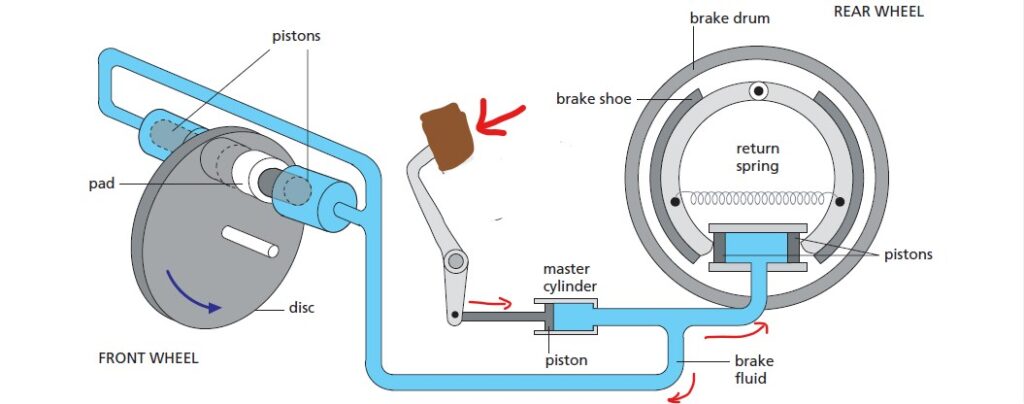How to use Pascal’s law to explain Hydraulic car brakes?
Last updated on October 8th, 2021 at 05:17 am
Pascal’s Law states that any change in the pressure applied to a completely enclosed fluid is transmitted undiminished to all parts of the fluid and the enclosing walls. Let’s see how Pascal’s principle is applied to design hydraulic car brakes.
When the brake pedal is pushed, the piston in the master cylinder exerts a force on the brake fluid.
And following Pascal’s principle, the resulting pressure is transmitted equally to eight other pistons (four are shown in the figure below). These pistons force the brake shoes or pads against the wheels and stop the car.

Related study:
You can also check this post to find how Pascal’s principle is applied in hydraulic jack or car lift.
